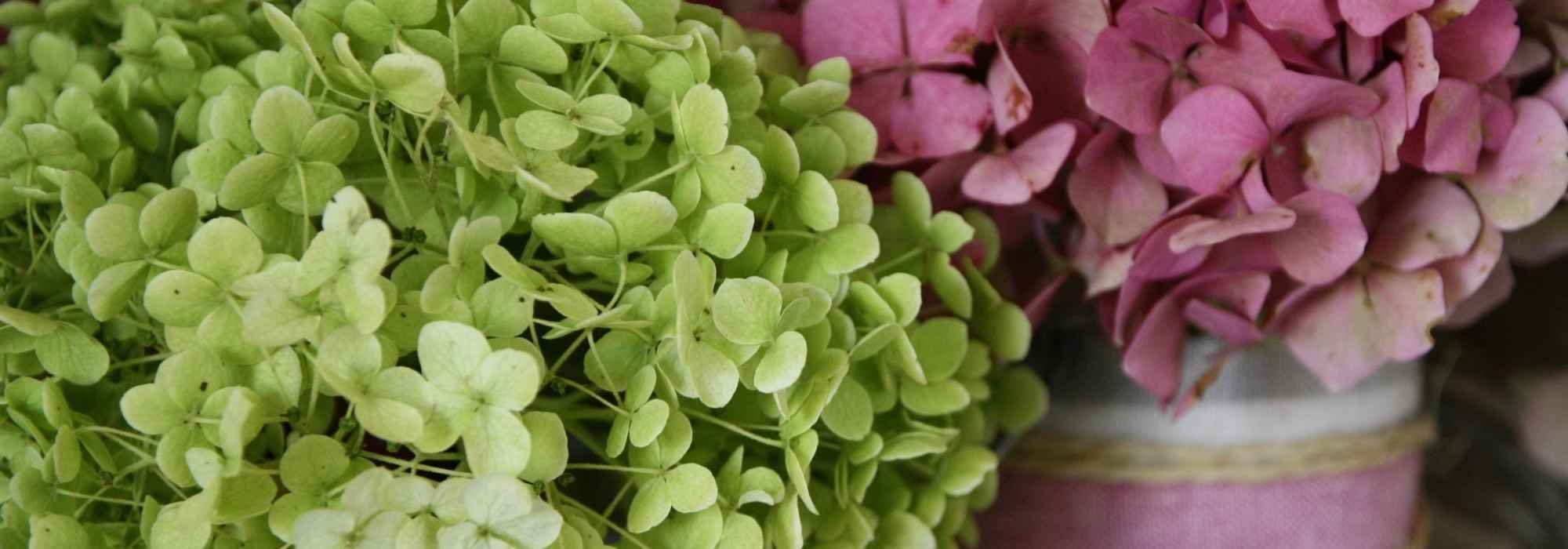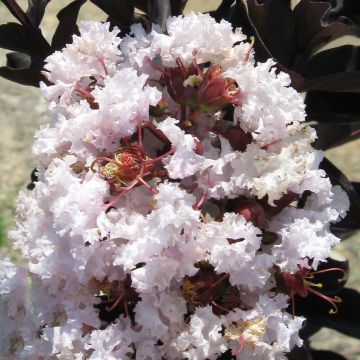

Hortensia paniculé - Hydrangea paniculata Bloody Marie


Hydrangea paniculata Bloody Marie
Hydrangea paniculata Bloody Marie
Hydrangea paniculata Bloody Marie
Paniculate Hydrangea, Panicled Hydrangea, Panicle Hydrangea
Seemed a bit sparse upon arrival, but has taken off nicely. Stunning!
Nath, 02/05/2025
Special offer!
Receive a €20 voucher for any order over €90 (excluding delivery costs, credit notes, and plastic-free options)!
1- Add your favorite plants to your cart.
2- Once you have reached €90, confirm your order (you can even choose the delivery date!).
3- As soon as your order is shipped, you will receive an email containing your voucher code, valid for 3 months (90 days).
Your voucher is unique and can only be used once, for any order with a minimum value of €20, excluding delivery costs.
Can be combined with other current offers, non-divisible and non-refundable.
Home or relay delivery (depending on size and destination)
Schedule delivery date,
and select date in basket
This plant carries a 24 months recovery warranty
More information
We guarantee the quality of our plants for a full growing cycle, and will replace at our expense any plant that fails to recover under normal climatic and planting conditions.

Would this plant suit my garden?
Set up your Plantfit profile →
Description
Hydrangea paniculata Bloody Marie is a variety of paniculate hydrangea that is interesting for its bushy habit and its flowering, which is as abundant as it is colourful. The shrub, if pruned each spring, disappears under an abundance of conical panicles which gradually change from a beautiful creamy white to pastel-pink in summer, taking on increasingly intense red tones before wilting. Equipped with sturdy stems, this hydrangea maintains a clean appearance even when laden with flowers. Superb in the garden, it also adapts to cultivation in containers, in both sun and semi-shade.
Hydrangea Bloody Marie belongs to the Hydrangeaceae family, and its multitude of hydrangeas in varied colours and forms. Paniculate hydrangeas originate from the Far East, from Japan to southern China. A distinctive characteristic of theirs is to produce, in summer, large conical inflorescences (panicles) on stiff or arched branches, often shaded with purple. In wild varieties, both fertile white flowers (tiny and lacking petals) and sterile flowers (with large, visible petals) coexist. In horticultural varieties, it is most often the sterile flowers that are developed and bring a welcome generosity. These hydrangeas tolerate the sun quite well, provided it is not scorching. They are satisfied with good garden soil that is well drained but not too acidic, limey or dry. Unlike Hydrangea macrophylla, H. paniculata flowers on the current year's wood, which means that they can be pruned even in spring, without compromising the year's flowering.
'Bloody Marie' quickly forms a ramified bush which will average 1.35 m (4 ft 5 in) high and about 80 cm (31.5 in) wide in the ground. Cultivated in a pot, it will be less imposing. Flowering starts between June and early July. At the ends of the stems bloom large elongated cones, measuring 20 to 25 cm (7.9 to 9.8 in) wide. When in bloom, the flowers are almost white. As flowering progresses, the pink colour sets in, followed by red tones. The panicles then wilt gradually, like paper, remaining beautiful until autumn - or even later if the weather is mild. In mid-autumn, the leaves turn yellow before falling.
Since it is not very bulky, the Bloody Marie hydrangea can be placed anywhere, even in small gardens where it will make a beautiful specimen to be placed in isolation. In larger areas, it can be planted en masse for a spectacular effect. It will also be perfect in a large container on a terrace or a large balcony, provided you remember to water it from time to time. In the garden, you can combine it with other varieties such as Great Star Le Vasterival, which is taller with large sterile flowers, or Bobo (a dwarf variety). Other small shrubs will accompany it nicely, such as Abelia 'Pastel Charm', Berberis 'Rosy Glow', Daphne 'Pink Fragrance' or Cotinus 'Lilla'.
Hydrangea paniculata Bloody Marie in pictures




Plant habit
Flowering
Foliage
Botanical data
Hydrangea
paniculata
Bloody Marie
Hydrangeaceae
Paniculate Hydrangea, Panicled Hydrangea, Panicle Hydrangea
Cultivar or hybrid
Planting and care
Hydrangea paniculata Bloody Marie is not very demanding about the nature of the soil, as long as it is not too heavy, nor too dry or too chalky. It requires a sunny, but not scorching, exposure, in the morning sun or a semi-shaded area. When planting, install it in deeply worked soil. A good base fertiliser (horn or dehydrated blood) will promote the recovery of your young plant and nourish it without risk of burning. If your soil tends to be dry, mix compost or loam with the soil when filling in the planting hole and provide a surface watering basin. Mulch in summer to save on watering.
At the end of summer, we recommend not cutting the dry panicles, which will protect the terminal shoots of the branches in winter; you should cut all the dry flowers at the end of February or on the first fine days. Their spring growth is quite late.
Planting period
Intended location
Care
Planting & care advice
-
, onOrder confirmed
Reply from on Promesse de fleurs
Similar products
Haven't found what you were looking for?
Hardiness is the lowest winter temperature a plant can endure without suffering serious damage or even dying. However, hardiness is affected by location (a sheltered area, such as a patio), protection (winter cover) and soil type (hardiness is improved by well-drained soil).

Photo Sharing Terms & Conditions
In order to encourage gardeners to interact and share their experiences, Promesse de fleurs offers various media enabling content to be uploaded onto its Site - in particular via the ‘Photo sharing’ module.
The User agrees to refrain from:
- Posting any content that is illegal, prejudicial, insulting, racist, inciteful to hatred, revisionist, contrary to public decency, that infringes on privacy or on the privacy rights of third parties, in particular the publicity rights of persons and goods, intellectual property rights, or the right to privacy.
- Submitting content on behalf of a third party;
- Impersonate the identity of a third party and/or publish any personal information about a third party;
In general, the User undertakes to refrain from any unethical behaviour.
All Content (in particular text, comments, files, images, photos, videos, creative works, etc.), which may be subject to property or intellectual property rights, image or other private rights, shall remain the property of the User, subject to the limited rights granted by the terms of the licence granted by Promesse de fleurs as stated below. Users are at liberty to publish or not to publish such Content on the Site, notably via the ‘Photo Sharing’ facility, and accept that this Content shall be made public and freely accessible, notably on the Internet.
Users further acknowledge, undertake to have ,and guarantee that they hold all necessary rights and permissions to publish such material on the Site, in particular with regard to the legislation in force pertaining to any privacy, property, intellectual property, image, or contractual rights, or rights of any other nature. By publishing such Content on the Site, Users acknowledge accepting full liability as publishers of the Content within the meaning of the law, and grant Promesse de fleurs, free of charge, an inclusive, worldwide licence for the said Content for the entire duration of its publication, including all reproduction, representation, up/downloading, displaying, performing, transmission, and storage rights.
Users also grant permission for their name to be linked to the Content and accept that this link may not always be made available.
By engaging in posting material, Users consent to their Content becoming automatically accessible on the Internet, in particular on other sites and/or blogs and/or web pages of the Promesse de fleurs site, including in particular social pages and the Promesse de fleurs catalogue.
Users may secure the removal of entrusted content free of charge by issuing a simple request via our contact form.
The flowering period indicated on our website applies to countries and regions located in USDA zone 8 (France, the United Kingdom, Ireland, the Netherlands, etc.)
It will vary according to where you live:
- In zones 9 to 10 (Italy, Spain, Greece, etc.), flowering will occur about 2 to 4 weeks earlier.
- In zones 6 to 7 (Germany, Poland, Slovenia, and lower mountainous regions), flowering will be delayed by 2 to 3 weeks.
- In zone 5 (Central Europe, Scandinavia), blooming will be delayed by 3 to 5 weeks.
In temperate climates, pruning of spring-flowering shrubs (forsythia, spireas, etc.) should be done just after flowering.
Pruning of summer-flowering shrubs (Indian Lilac, Perovskia, etc.) can be done in winter or spring.
In cold regions as well as with frost-sensitive plants, avoid pruning too early when severe frosts may still occur.
The planting period indicated on our website applies to countries and regions located in USDA zone 8 (France, United Kingdom, Ireland, Netherlands).
It will vary according to where you live:
- In Mediterranean zones (Marseille, Madrid, Milan, etc.), autumn and winter are the best planting periods.
- In continental zones (Strasbourg, Munich, Vienna, etc.), delay planting by 2 to 3 weeks in spring and bring it forward by 2 to 4 weeks in autumn.
- In mountainous regions (the Alps, Pyrenees, Carpathians, etc.), it is best to plant in late spring (May-June) or late summer (August-September).
The harvesting period indicated on our website applies to countries and regions in USDA zone 8 (France, England, Ireland, the Netherlands).
In colder areas (Scandinavia, Poland, Austria...) fruit and vegetable harvests are likely to be delayed by 3-4 weeks.
In warmer areas (Italy, Spain, Greece, etc.), harvesting will probably take place earlier, depending on weather conditions.
The sowing periods indicated on our website apply to countries and regions within USDA Zone 8 (France, UK, Ireland, Netherlands).
In colder areas (Scandinavia, Poland, Austria...), delay any outdoor sowing by 3-4 weeks, or sow under glass.
In warmer climes (Italy, Spain, Greece, etc.), bring outdoor sowing forward by a few weeks.

















































